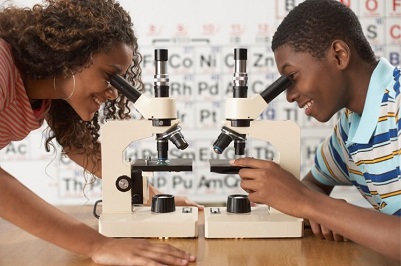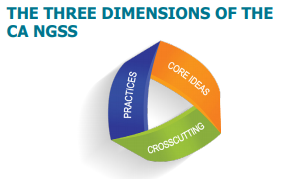“STEM” stands for Science, Technology, Engineering, and Mathematics education. Add Art and you have “STEAM.”
Is it STEM or STEAM? The opinions on that aren’t unanimous, but most parents and families agree about the end goal – that school curriculum should foster innovation, develop 21st century skills, and teach young people to think both logically and creatively.
Today, the fastest growing job sectors are related to science, technology, engineering, arts and math (STEAM) and 60% of college majors require a math background. Smart phones, computer-equipped cars and self-regulating appliances are just a few reminders of how pervasive technology is in our lives. We also know more technology-driven change will occur during the lifetime of our children.
STEAM LEARNING: A PRIORITY FOR OUR KIDS’ SUCCESS

It’s clear that young people with competency in the STEAM disciplines are more likely to prosper both in their lives and in their careers.
Building the capacity of young people in science, technology, engineering and math — and doing so within the humanistic frame that the arts help provide — is essential. Young people will need a high level of STEAM literacy to make decisions about their daily lives and to fulfill their role as informed citizens.
Today’s young people are already finding that more and more jobs require proficiency in STEAM disciplines. Our schools need to make sure they’re prepared.
California State PTA took particular interest in STEM/STEAM education with the 2011 passage of the resolution “Science, Technology, Engineering and Mathematics (STEM) Education” resolution and PTA has advocated for bills and policies related to STEM education many times since.
Families Are an Important Part of the STEAM Equation
Research from National PTA emphasizes the essential role of family engagement in increasing students’ access to opportunities in science, technology, engineering, arts and math — especially among girls and under-represented youth. Read the STEAM White Paper.
Five Tips for Parents
- Make It Real – Connect math and science to the real world in your everyday activities as a family. When you go to a store, bank or restaurant, talk about how math is used on bills, deposit slips, menus or for tipping. At the park or beach, observe wildlife and plants, let your child draw what he or she sees and go online at home to discover even more.
- Play Games – Encourage your child to play with puzzles and games that involve decision-making or strategy to build reasoning skills. Card games like “Go Fish” teach children to count, sort and use strategy. Games like Scrabble involve spelling and math. Playing games in the car that estimate distance or listening to music, audio books and podcasts help grow STEAM skills.
- Feed Curiosity – Borrow science, technology, art and math books and materials from the library and explore these topics online. Visit science museums, zoos, aquariums, theaters and state parks to discover what excites and interests your child. Talk with teachers about your child’s studies to find out ways to reinforce STEAM skills at home.
- Encourage Discovery – Teach children how to find information and encourage them to solve science and math problems on their own. As a child tries to solve a problem, ask helpful questions and let him/her take time to find out how to do it. Learning how to find answers helps to develop critical thinking.
- Expand Horizons – While young children may want to be doctors or firefighters, widen their awareness of other interesting careers. Pilots, mechanics, software engineers, forest rangers, video-game developers and biologists, for instance, are all jobs requiring STEAM skills. Go online together to explore the range of career options available with a foundation in STEAM.
NEXT GENERATION SCIENCE STANDARDS
Science is the S in STEAM — the acronym now often used when people want to talk about science, technology, engineering, art and math as a set of connected school subjects.
California schools are taking a new approach to science, thanks to the state’s adoption of the Next Generation Science Standards (NGSS). The standards call on schools to introduce science to students beginning in kindergarten in order to fuel kids’ innate curiosity and ignite a lifelong interest in science and engineering. That’s especially important for students who don’t think of themselves as “science kids.”
When educators talk about NGSS they may mention “three dimensional learning.” 
- Dimension 1: Science and Engineering Practices (SEPs) – What scientists and engineers do. SEPs are skills and behaviors they use to answer a question or solve a problem.
- Dimension 2: Disciplinary Core Ideas – What scientists and engineers know. These fundamental ideas are organized into four disciplines: life science; physical science; Earth and space science; and engineering, technology, and applications of science.
- Dimension 3: Crosscutting Concepts – How scientists and engineers think. Understanding these common threads that tie together the four disciplines of science helps students deepen their understanding of core ideas and allows them to implement the practices more effectively.
Building Knowledge and Understanding Over Time
Here is an example of what a child might experience in science as they go through school. Earth’s Systems is the NGSS “Disciplinary Core Idea” being taught.
- Kindergarten: Students begin looking for patterns in weather through their own personal observations
- 3rd grade: Students use actual data in tables and graphical displays to describe typical weather conditions expected during a particular season and climate change over time
- Middle school: Students collect data to provide evidence for how the motions and complex interactions of air masses result in changes in weather conditions
- High school: Students use a model to describe how variations in the flow of energy into and out of Earth’s systems result in changes in climate.
As young people get older, they learn progressively more about the topic of weather while they also develop their ability to use scientific practices such as data collection and analysis. Even in kindergarten, they begin gaining familiarity with crosscutting concepts — such as patterns and stability versus change — that are used in every science domain.
At every grade level, this new approach to teaching science is designed to be more engaging and interactive, aligning with how kids learn best. The new standards encourage students to ask lots of questions and emphasize hands-on investigation and discovery. The new standards will also allow teachers to be more innovative and creative in the ways they teach science.
PARENTS KNOW SCIENCE IS IMPORTANT

In a PTA-sponsored survey of parents throughout California, 9 out of 10 parents agreed that learning science is equally important as reading, writing and math. Parents know science matters but only about half said they were satisfied with the amount of science education their child was getting in school. Many people hope that the state’s on-going work to transform how schools teach science will help change that.
ADDITIONAL RESOURCES
- In the California State PTA Resource Library you’ll find more information about how the Next Generation Science Standards are being taught as well as great ideas for how families all over California can discover science together.
- What Your PTA Can Do to Promote STEAM Education
- Online STEAM Activities and Reference Sources
- California’s Adopted Common Core State Standards: Mathematics
- National Research Council Report on STEM Integration in K-12 Curriculum
- Research Paper: Early Exposure to STEM and Its Impact on the Future of Work
- POLICY REPORT: PTA Survey Reveals Parents’ Views on Science Education (NGSS)